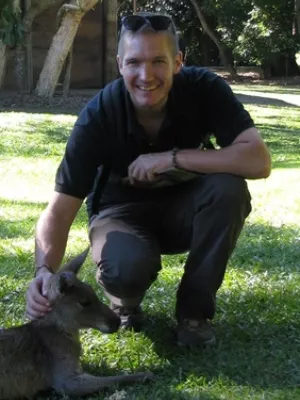
Paul Caplat
Forskare

Sophia Title
Författare
Summary, in English
Synthesis Prediction and management of species responses to climate change is an urgent but relatively young research field. Therefore, climate change ecology must by necessity borrow from other fields. Invasion ecology is particularly well-suited to informing climate change ecology because both invasion ecology and climate change ecology address the trajectories of rapidly changing novel systems. Here we outline the broad range of active research questions in climate change ecology where research from invasion ecology can stimulate advances. We present ideas for how concepts, case-studies and methodology from invasion ecology can be adapted to improve prediction and management of species responses to climate change. A major challenge in this era of rapid climate change is to predict changes in species distributions and their impacts on ecosystems, and, if necessary, to recommend management strategies for maintenance of biodiversity or ecosystem services. Biological invasions, studied in most biomes of the world, can provide useful analogs for some of the ecological consequences of species distribution shifts in response to climate change. Invasions illustrate the adaptive and interactive responses that can occur when species are confronted with new environmental conditions. Invasion ecology complements climate change research and provides insights into the following questions: 1) how will species distributions respond to climate change? 2) how will species movement affect recipient ecosystems? And 3) should we, and if so how can we, manage species and ecosystems in the face of climate change? Invasion ecology demonstrates that a trait-based approach can help to predict spread speeds and impacts on ecosystems, and has the potential to predict climate change impacts on species ranges and recipient ecosystems. However, there is a need to analyse traits in the context of life-history and demography, the stage in the colonisation process (e.g. spread, establishment or impact), the distribution of suitable habitats in the landscape, and the novel abiotic and biotic conditions under which those traits are expressed. As is the case with climate change, invasion ecology is embedded within complex societal goals. Both disciplines converge on similar questions of when to intervene? and what to do? which call for a better understanding of the ecological processes and social values associated with changing ecosystems.
Avdelning/ar
- Institutionen för naturgeografi och ekosystemvetenskap
- BECC: Biodiversity and Ecosystem services in a Changing Climate
Publiceringsår
2013
Språk
Engelska
Sidor
1265-1274
Publikation/Tidskrift/Serie
Oikos
Volym
122
Issue
9
Länkar
Dokumenttyp
Artikel i tidskrift
Förlag
Wiley-Blackwell
Ämne
- Physical Geography
Status
Published
ISBN/ISSN/Övrigt
- ISSN: 1600-0706